The Way of Dragon
Is XRCD mastering just another audiophile swindle? Can K2HD disc reissues add any value to the already many times remastered recordings? Is it possible to extract the music directly from mastering consoles in any better quality? Would you buy an SACD disc for 200 € or more? Is streaming the way to heaven?
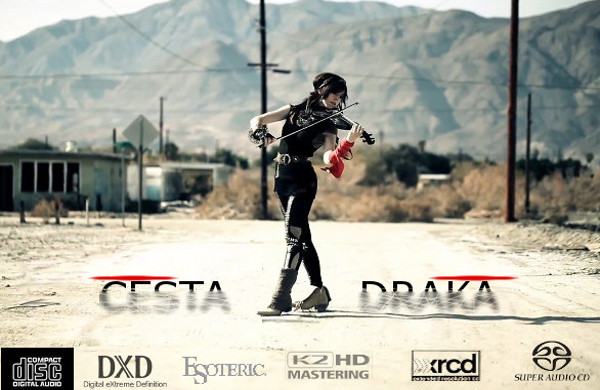
After 30 years in existence the CD medium rejects to capitulate. It is under heavy pressure of data streaming and lossy formats internet and mobile exchange. It is clear already that the mainstream future will not favor physical music carriers, though the silver discs and black vinyls will remain an important music industry niche. Us - audiophiles - are the niche. We are willing spending our money over and over again for the endless stream of remasters of Brothers in Arms or other favorite stuff. Until there is demand there will be production. Yet, very few audiophiles are able to navigate themselves amidst the dozens of re-releases, remasters and different formats. Which are the real improvements and which just marketing hype?
THE CARRIER
The plastic disc that carries the digital data morphed significantly during the last decade. The modern trend is to get rid of the physical media completely:
 CD - Compact Disc
CD - Compact Disc
The digital information is encoded into a polycarbonate disc of 120mm diameter and 1.2mm thickness. The data are imprinted from a negative matrix to a reflective aluminum foil (which makes the disc silver) in the form of pits. The aluminum layer is protected by a transparent layer that carries the artwork of the CD on it. It means that a CD disc is actually more prone to a damage from the upper side. In the past there were attempts to use a layer of genuine silver instead of the aluminum but the price was too high and the layer tended to oxidize.
CD Gold
The Gold version of the compact disc utilizes a real gold layer instead of the aluminum. The gold has no sonic advantages over the aluminum or silver, yet the "Gold Discs" are extremely popular among audiophiles. It is not because of the gold but because of the good mastering job from audiophile-oriented labels like Mobile Fidelity Sound Labs or Audio Fidelity. Should the mastering versions be the same a listener has no chance to hear a difference between a standard and a gold CD. Theoretically the gold disc show better resistance to oxidation process so often they were preferred as archive media.
 SHM-CD/SHM-SACD
SHM-CD/SHM-SACD
The SHM stands for Super High Material. The "supermaterial" means a layer of LCD display polycarbonate that - according to the producer, Memory Tech - has superior transparency so optical lens of CD players can better focus the pits. It is important to realize, however, than the difference between the two types of polycarbonates will be made negligible by a difference in mastering and pressing process. Not precise pits due to a worn out pressing matrix will not be saved by more accurate reading process. The correction circuits of a CD player will put their own signature onto such sound. So the relation of the SHM-CD (or SHM-SACD) vs standard CD (or SACD) is not a clear cut advantage for one or another.
RCC-CD
The First Impression Music (fimpression.com) is one of the biggest audiophile distributors across Atlantic. The marketing team is ready to grasp any opportunity to flood the market with presumably "higher" quality CDs. In the RCC process (Resonance Control Coating) the de-ionised polycarbonate is sprayed with special emulsion that, after setting, should help dampening resonances of a rotating disc. Is it of any use? Well, quite often the discs are not well centered or not totally flat. My computer CD reader gets crazy about some original pressings - they rattle and want to jump out. Provided that a manufacturer gives a disc proper care and treatment it should indeed improve the data reading accuracy.

Sony Music Entertainment developed the technology of writing data with BLD laser (blue laser with shorter wavelength and higher accuracy). The "Blu-spec CDs" use the Blu-ray polycarbonate that, according to Sony, also provides better resonance control than the CD polycarbonate.
When there is no disc
The most recent trend dictates is to have no disc at all. The music is saved on a hard disc or a cloud or has become streamed from a remote storage. There is an ultimate advantage of such an approach: convenience. By one click one has the access to huge collections of music that is easily searchable, playlistable or categorizable. On top of that it can be accessed virtually from anywhere.
It is not a question but a certainty that similar "ownership" of music will take over, even though not necessarily in any form of todays media. Yet, measured from strictly hi-fi point of view the data streams miss something when ear to ear compared to the physical carriers. Theoretically it is nonsense, as the modern music is in majority produced, recorded, mixed and mastered digitally, no tapes, lacquers, cutting or pressing on the way. So the digital copy should mirror the original art perfectly. Yet, the standard CD often outperforms the data stream or the hard disc copy. Beginning with a D/A converter and ending with a pair of loudspeakers the route of the signal is absolutely identical. That is why I believe the problem is with the data reading or extraction - perhaps the software is waiting for something we do not know yet?
I am not against the "nothing" media for I love the flexibility they have - on the other hand I yet have to hear a computer audiophile system that would hold a candle to a high quality SACD/CD player. If a computer - or a iPhone or a network player - based system is carefully set up and perfectly balanced then it may easily outperform not so well intergrated high end players. If a high end player is carefully set up and perfectly balanced then it wins. Perhaps - in near future - we finally will be able to tackle the issue of the computer audio like the jitter was addressed two decades ago.
 THE JVC'S WAY OF DRAGON
THE JVC'S WAY OF DRAGON
The first condition of the quality of a CD recording is the quality of the original analogue or digital masters. Recording techniques and equipment are improving fast so is the master quality. Unfortuntely, the listener is not given a chance to hear it as the modern mastering techniques get more and more aggressive in order to win with a scan-listening customer. A few years ago I was organizing listening sessions to educate participants on how bad the overcompressed and limited recordings would sound. The problem was that - given the short time window I had for the music samples - most listeners voted for the overcompressed recording as better sounding. Including myself. But go and try to listen for another 20 minutes and you would end up disillusioned. Please check Audiodrom's Road To Hell and The Magic Four articles to find out why.
The soft "analogue" sound is for the human ear much more acceptable - that is why vinyl records survived (despite the severe technical limitations). As paradox, audiophile labels strive to immitate the imperfect sound of the vinyl with much more powerful digital technology - and often they fail. Still, the Redbook format (16-bit / 44.1 kHz PCM standard that was introduced by Philips in '80s) is surprisingly improvable within its fixed bitrate. From '80's on many clever tricks have appeared to boost the CD quality:
![]() HDCD (High Definition Compatible Digital)
HDCD (High Definition Compatible Digital)
The HDCD is a hardware solution - the digital filtration circuit of American Pacific Microsonic used to be implemented into some CD players in '90s. It brought benefits of improved dynamics and reduced jitter. Thanks to Reference Recordings' Keith O. Johnson, who had coded his legendary recordings through the HDCD, the system has become a benchmark for audiophile sound. Later Pacific Microsonics was acquired by Microsoft that stopped producing the HDCD chips.
 XRCD (Extended Resolution CD)
XRCD (Extended Resolution CD)
In 1993, the team around Japanese JVC developed a method of 20-bit encoding of analog masters. Five years later the new mastering technique was implemented commercially - the XRCD was born. The XRCD mastering swept the audiophile recordings market like a hurricane - the music was on many systems better sounding than standard CDs and the marketing clever. In 2009 JVC upgraded into XRCD 24 mastering which should have compared to DSD recordings, according to JVC officials. Not even close.
 SACD (Super Audio CD)
SACD (Super Audio CD)
The joint project of Philips and Sony celebrated the new millenium with the revolutionary DSD (Direct Stream Digital) format. Unlike the PCM/Redbook standard the DSD was based on 1bit / 2.8224 MHz, known as SACD. In the first years of existence the SACD format had to win over its rival, DVD-Audio, so that it could lose against something so inferior as the MP3 compression. Still, the SACD format is supported by more than 10,000 albums and for especially classical music lovers it has the capacity to provide the best listening experience right next to a live performance.
![]() K2HD
K2HD
The K2 was a project parallel to the XCRD, yet it was commercionalized by JVC only two decades later. The K2HD discs are mastered in 24 bit /100 kHz resolution. It is important to realize that at the end of the mastering process they need to be cut down back to 16 bit / 44.1 kHz. With the vinyl sound renaissance and quickly improving audio equipment quality it has become clear to audiophiles that the XRCD was just a patch, not a solution. The K2HD should have revived the highly resolved softness of the vinyl in CD resolution.
 DXD (Digital eXtreme Definition)
DXD (Digital eXtreme Definition)
The DXD means another step towards higher sampling rates as it operates in the 24-bit / 352 kHz region which is - theoretically - 3 times more than that of the SACD. Again, I am talking about the resolution during the mastering process only. The original masters of popular albums are either on tape or in standard 16bit/44.1kHz. Thus DXD first upsamples the data and then downsamples back to the standard CD resolution. Summary - the part about the increased resolving power of the DXD is just a marketing jargon. Yet the process itself, that was developed originally for Merging Technologies Pyramix DSD consoles, is indeed something special. It is pity that more DXD titles have not become available than only a few.
![]() Pure Analog 32/192
Pure Analog 32/192
Let's revisit JVC and FIM again. Pure Analog works with 32 bit / 192 kHz which may open a new universe for CD if only it would not have to downsampled again to the old good 16 bit / 44.1kHz. The project came too late anyway - it was rolled over by the upcoming digital downloads movement.
In Audiodrom, we receive many questions from listeners about the available "formats". During conversations with many audio equipment resellers I am often surprised at their incompetence and disorientation too.
As far as the physical discs are concerned (those playable in CD/SACD players) there is one fixed rule: The SACD is the only format with higher resolution. Anything else - and no matter which logo it shows on the jewel case - is the PCM/Redbook standard that is by virtue totally identical in its resolution to any commercially available CD disc.
The differences in sound that we hear between a "standard" disc and a "new format" lies purely in the remastering process. If a skilled mastering engineer goes for any super high resolution in order to hear more and consequently be able to address more imperfections, the sound will improve. But the same way you can improve a standard CD at standard price, it has nothing to do with the final disc technology.
THE MONA LISA PARADOX
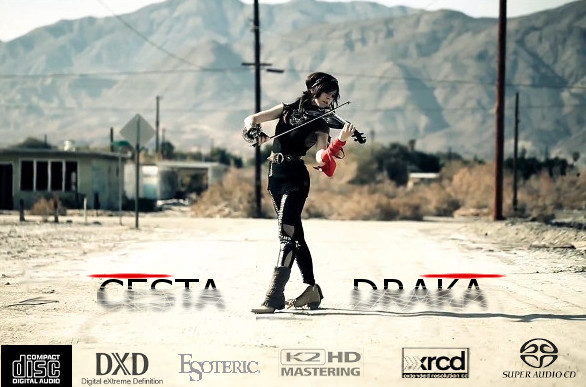 The main advantage of all the above discussed techniques makes different discs incomparable. How would you compare whether the SHM CD polycarbonate has any effect on sound if there are no two identical mastering copies available? It is a game with a listener though if one just focuses on the sound quality there will always be a "format" that matches the taste.
The main advantage of all the above discussed techniques makes different discs incomparable. How would you compare whether the SHM CD polycarbonate has any effect on sound if there are no two identical mastering copies available? It is a game with a listener though if one just focuses on the sound quality there will always be a "format" that matches the taste.
Take Da Vinci's Mona Lisa and ask several artists to make a copy. They will use different techniques, different hand strokes, different brushes, different moods. The least creative will copy the original bit by bit. Yet, none of those copies will be identical. The master is just one. Anyway, for someone the copy may be more appealing, with more vivid colours, with more dynamic brushwork, anything. And they will sell. So will the XRCDs, the K2HDs and other remasters. They just rework original tapes (and often not even them, as they start with a copy of the master very often), filter it, equalize it, clean it etc. so that they sound terrific under certain circumstances. The authors of the XRCD says it is "a creative process" above all that requires a skilled mastering engineer. The technology is only a necessary mean to get there. And the engineer has its own preferences as we all do.
If anyone hears or feels that any of the innovative redbook iterations does really sound better then it is perfectly allright. Such an experience will differ case by case based on the mastering version available, the audio chain available and the listener's auditioning skills. Very often it is the lower quality of the audio components that makes the "improved" version stand out. On different occassions the Audiodrom's team tried to compare various versions of the same recording but it led to no conclusion. One can as well compare three different editions of the very same album on CD - there is always a difference to their sound. What I can say is that the XRCD discs often benefit from slight compression - thus the sound is more present and clearer. Yet we pay a tax: through shifting dynamic ratios there is change to spatial information, spectral balance and timbre. The secondary effect is that such XRCDs are more tiring for the ear. Yet, such discs perfectly fit into Japanese reproduction standards where the components are often voiced to have significant roll-off at high frequencies - silkiness is thus balanced by the recording's sharper edge and spark. Through unrestricted beryllium or diamond tweeters such the recording may sound rather acidic. However, it is not the rule and there are many brilliant XRCDs or K2HDs out there. Also some period recordings, like the legendary issues of Yes, Genesis or Jethro Tull, or remastered classical music performances from 50's and 60's, have got alive through such remastering techniques.
At War
In April 2008 the Polish online High Fidelity magazine organized a listening session to compare the XRCD and K2HD formats. By now the readers have already known that they were not formats what was compared, just different mastering processes. Anyway, there were few interesting outcomes from this session.
Most listeners concluded that the sound of both discs was more brilliant than they were used to. The XRCD was reported more analytic whereas the K2HD was recognized to be more fluid. One of the listeners compared the difference to the experience of a conductor vs the experience of a listener in the audience. Some participants noted a kind of sonic exhibitionism that kills the music in favour of the sound - thus the music becomes only a "dead spectacle on a piece of plastics". I am afraid that the very same trend can be detected with audio components. Should you want to learn more please check our article The Deadlock of high-end: illusion & hyperreality.
Some, like the mastering guru Bob Katz who is responsible for great mastering of many Chesky albums and now runs its own Digital Domain mastering services, opinion that the JVC mastering cleverly uses dither and noise-shaping to manipulate dynamic ratios of program material and remove the original digital grain induced by a lower sampling frequency.
CD versus K2HD
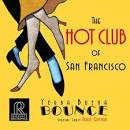 I said it was very difficult to find the recordings that would be comparable in mastering. Some exist, though. The Stardust track from excellent The Hot Club of San Francisco has been published on HDCD (Reference Recordings, RR-109CD) and the same master was used by FIM for its K2HD sampler (FIM, This is K2HD Sound!, K2HD078). By playing back the song without the HDCD decoder both discs may be quite comparable in our experiment. Again, if I used the HDCD chip then the RR version should have been dynamically improved - so variations still exist.
I said it was very difficult to find the recordings that would be comparable in mastering. Some exist, though. The Stardust track from excellent The Hot Club of San Francisco has been published on HDCD (Reference Recordings, RR-109CD) and the same master was used by FIM for its K2HD sampler (FIM, This is K2HD Sound!, K2HD078). By playing back the song without the HDCD decoder both discs may be quite comparable in our experiment. Again, if I used the HDCD chip then the RR version should have been dynamically improved - so variations still exist.
With the K2HD I noticed much heftier lows - the bass was more prominent, maybe too much, yet it definitely was better contoured and punchy without sacrificing its weight. The guitars and their strings are finely delineated as if each string had its own microphone, one can almost touch the resonating wire. It was like my ears were directly wired to a recording console, the amount of information was enormous and the listening required concentration to absorb everything.
The Reference Recordings pressing was much quiter and thus I had to increase the volume by 2-3dB to reach the same levels with guitars. The bass could be heard deeper in the mix and it was not that much authoritative. Unlike the K2HD my impression was that the bass was better balanced towards the other instruments and also it had got the opportunity to better develop its harmonies. To my ears the CD recording was also spatially more open and natural, like watching a movie in IMAX vs standard 3D projection. The former provides spatial continuum whereas the latter creates only a kind of layered illusion without real depth. With the K2HD I enjoyed the sound's precision yet the music became a prisoner confined within the disc. For sure this finding is mine finding and cannot be generalized - on top of that I was comparing two superb editions.
Esoteric, SHM and SACD
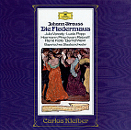 Esoteric is a Japanese label that belongs to Teac’s family. The Esoteric’s CDs are remastered on custom-built consoles and share the same flavor with XRCD and K2HD releases. For the listening test I tried to match the original Deutsche Grammophon issue of Strauss‘s three-act Die Fledermaus from 1975 (Carlos Kleiber, Original Image Bit Processing, 457 765-2) to the very same recording which was remastered by Klaus Behrens and Dieter Karwatky for Esoteric (ESSG-90041/42).
Esoteric is a Japanese label that belongs to Teac’s family. The Esoteric’s CDs are remastered on custom-built consoles and share the same flavor with XRCD and K2HD releases. For the listening test I tried to match the original Deutsche Grammophon issue of Strauss‘s three-act Die Fledermaus from 1975 (Carlos Kleiber, Original Image Bit Processing, 457 765-2) to the very same recording which was remastered by Klaus Behrens and Dieter Karwatky for Esoteric (ESSG-90041/42).
The Esoteric CD provides great dynamic contrasts. Kleiber has a good pair of ears and manages to illuminate the performance with fine nuances, the recording’s tonality is clean and Julie Varady (Rosalinda) remains perfectly trackable within expanding soundstage with accurate articulation. The orchestra seemingly endlessly decays into silence, I could detect the air moving until the very last soft sound.
Vis-à-vis the Esoteric CD the Deutsche Grammophon’s disc represents uninvolving sonics – the sound is hard to ears, lacking dynamics and lacking the vividness and colours that I enjoyed with the previous issue. The pizzicato on strings is not that finely defined, the vocal is more present with more prominent sibilants and the organic feeling of the music is lost. The flute that was ethereal with the Esoteric has become sketchy with the DG.
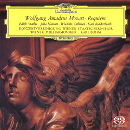 The previous example was that of the successful remastering that elevates the performance. It was not a Mona Lisa’s copy, rather a renovation. Unfortunately, that was not the case of Mozart’s Requiem on SHM that was mastered in DSD (Mozart, Requiem, K626, Karl Boehm & Wiener Philharmoniker, UCGG-9003). The SHM-SACD is overly bright in this case and its dynamics flat to unlistenable levels.
The previous example was that of the successful remastering that elevates the performance. It was not a Mona Lisa’s copy, rather a renovation. Unfortunately, that was not the case of Mozart’s Requiem on SHM that was mastered in DSD (Mozart, Requiem, K626, Karl Boehm & Wiener Philharmoniker, UCGG-9003). The SHM-SACD is overly bright in this case and its dynamics flat to unlistenable levels.
Using standard logic it should not be like that - the marriage of the SHM and the SACD should have resulted into a sonic perfection instead of the failure. The truth is that the 'format' is not a guarantee rather just an opportunity, it is about all elements working together like in a good football team where it is not relevant whether individuals are stars or not. The goal is scored only when everything is synchronized, like with the DSD remaster of Black Sabbath's Paranoid on Sanctuary's SHM-SACD (Universal Mastering Studios Japan, UIGY-9034). The recording is transparent and kinetic like it was recorded today, only tape hiss reminds you of the decades that have passed since the band was in a studio. The Sanctuary Records CD remaster (SMRCD032) is also exceptional - the voicing is a bit more fancy with more prominent bass and treble, yet it lends a lot of vitality and rhythmic drive to the recording. The SHM-SACD is more midrange-centered so it favours Ozzy's vocals and places the singer in the correct poition within the soundstage - in the CD version he is moved further away to the depth. I have found the sound of the SHM-SACD more natural, the CD is more attractive for ears but also a bit more fatiguing.
K2HD versus SACD
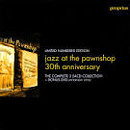
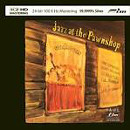 The famous Jazz At The Pawnshop is another landmark recording that makes comparisons possible. The SADie Author v.1.1 DSD master has been released – except of other versions - as a three hybrid SACD + DVD collection on Proprius (PRSACD 7778), as well as a 24bit/100kHz remaster on K2HD (LIM K2HD028C). Let’s see how the CD layer, SACD layer and K2HD CD upsampled versions compare.
The famous Jazz At The Pawnshop is another landmark recording that makes comparisons possible. The SADie Author v.1.1 DSD master has been released – except of other versions - as a three hybrid SACD + DVD collection on Proprius (PRSACD 7778), as well as a 24bit/100kHz remaster on K2HD (LIM K2HD028C). Let’s see how the CD layer, SACD layer and K2HD CD upsampled versions compare.
The CD layer lacks a bit of everything. The data losses can be heard on ambient clues that are not that prominent and natural as with the SACD or K2HD. The piano is drier and sounds more mechanic. The whole performance is more sterile and less alive. The K2HD disc lends firmer bodies to instruments and improves definition, the music sounds fresh and fluid. The soundstage is quite compact – not because the dimensionality is missing, it is not, but because neither CD or K2HD does illuminate the positioning of microphones and relative positions of instruments inside the recording venue. It is only with the SACD when the finest and faintest sounds and ambience come back, not unlike a window is opened in a airless room. The sound structure is more molecular, we hear more and better, especially with vibraphone solo. The SACD excels and can be declared the most natural of the three.
For the SACD it is crucial to be encoded in DSD throughout the whole process. The original premise of the DSD encoding vanished a bit today and many recordings are made in PCM to be upsampled into DSD only later for multichannel sound. Thus with the multichannel you can enjoy the extra dimensions, yet with stereo you miss the main advantage of the format: the higher resolution. Anyway, the creativity of the labels is endless and some are willing to take the SACD even higher. Japanese Exton label tries to capitalize on something unique.
The Way of Dragon - Exton
 The CD or SACD discs are stamped with a glass matrix with the negative image of the disc. Of course the glass subjects to wear during the process so the original glass master is cloned for CD production units. The original pressing thus may differ from factory to factory, a reissue can be different from the original issue etc. Logically, there should be also difference between the disc that was pressed as the first and the disc number 100,000 from the very same master.
The CD or SACD discs are stamped with a glass matrix with the negative image of the disc. Of course the glass subjects to wear during the process so the original glass master is cloned for CD production units. The original pressing thus may differ from factory to factory, a reissue can be different from the original issue etc. Logically, there should be also difference between the disc that was pressed as the first and the disc number 100,000 from the very same master.
Japonese Exton (and its sublabels of Cryston and Triton) is famous among classical music audiophiles with extraordinary recordings of extraordinary performances – I can only confirm that each single Exton’s release is a sonic gem. The mastermind of the Exton, Tomoyoshi Ezaki, launched two interesting projects. None of them is remastering like with XRCD/K2HD/DXD/PA techniques. Instead, Ezaki just uses different technology to make the ‘pressing’.
Direct Cut
The Exton’s Direct Cut is basically the use of the original glass master to produce a disc, without any cloning technology. As such, the resulting CD should be as close to the original glass master as possible. The only disadvantage is that the original glass master becomes worn out by the pressing so the issues are limited to several hundreds. Exton offers identical recordings in all formats – CD, SACD and Direct Cuts so it is actually very easy to compare how they benefit from different handling.
Direct Clone
Is there anything that can be even closer to the digital master than the glass master? Yes, the Exton’s Direct Clone technique writes data on a disc directly from mastering console. That is how one gets rid of all the conversions and upsamplings and can have the music in is virginal purity. Actually it is almost like owning a mastertape. There are some limitations, however – the direct cloning of SACDs is not possible and the result is thus the Red Book CD again. Also, as the data are burnt onto a disc, there is a theoretical media shelf life question.
What I liked with the Exton discs is that I finally had four absolutely identical mastering versions available, the only difference being how thery were written onto a disc. I was listening to the amazing performance of Tschaikovsky’s 5th symphony conducted by Ken-Ichiro Kobayashi and performed by Czech Philharmonic Orchestra (Tschaikovsky, Symphony No.5, Czech Philharmonic Orchestra, Exton):
DSD SACD (OVXL-0021), 20€
CD layer of the SACD disc (OVXL-0021), 20€
DSD SACD DIRECT CUT (OVCL-0141), 200€
CD DIRECT CLONE (OVCL-00141), 100€
Tomoyoshi Ezaki is a worshipper of the world’s best concert halls – no surprise that some of the recordings has been born in Prague’s Rudolfinum. Which was actually great because I am very familiar with the acoustics of this hall, being a frequent visitor.
Let’s not spend time by describing how phenomenal is the Exton’s SACD sonically – just take it as a fact. If you are not able to hear the difference with the CD then your audio components or your room have a serious issue.
Direct Cut SACD versus SACD
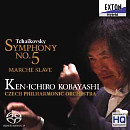 Comparing these two the difference is more subtle. I would say that concert-goers will appreciate them more than those who only use home listening as a reference. The benefits of the Direct Cut can be summarized as more transparent and communicative soundstage, better delineation of sounds (including those non-musical, like breathing) and more natural colours. The hybrid SACD’s sound is a bit more artificial and very slightly hazed, a tad less beautiful. Also in orchestral tuttis the sound is more legible with the Direct Cut. The more you listen to both the clearer those nuances become – at the end of listening session we were able to identify what was playing quite reliably.
Comparing these two the difference is more subtle. I would say that concert-goers will appreciate them more than those who only use home listening as a reference. The benefits of the Direct Cut can be summarized as more transparent and communicative soundstage, better delineation of sounds (including those non-musical, like breathing) and more natural colours. The hybrid SACD’s sound is a bit more artificial and very slightly hazed, a tad less beautiful. Also in orchestral tuttis the sound is more legible with the Direct Cut. The more you listen to both the clearer those nuances become – at the end of listening session we were able to identify what was playing quite reliably.
Direct Clone CD versus CD versus SACD
A very interesting test as we literally move closer to the master in 16-bit / 44.1 kHz. The Direct Clone was dramatic improvement over the CD – dynamics of the latter were impaired, the sound too forward and stressed, more digital. For example, the cloned master presented beautiful three-dimensional strings that were much closer to reality than the hyperreal JVC’s exhibitionism.
I was not prepared for one thing, however: the Direct Clone got ahead of the hybrid SACD in some sonic elements and started to chase the Direct Cut. What elements? Contours, definition, microdynamics and harmonic development. The Direct Clone did not show the natural expansiveness and soundstage holography of the SACD yet it had the same fluidity and smoothness. Looks like there is many ways to the same destination if applied correctly.
FIM Ultimate Disc (UDM)
Also FIM (First Impression Music) strives to get as close to the original master as possible with their Gold CD-R hard-disc data copy. On top of that the Gold CD-R is anti-resonance treated by the aforementioned RCC technology and is guaranteed to have 70x less data error rate. When ordering the UDM CD-R from FIM you have to fill in the order with your name as the copies are limited and subject to traceability. Well, this is something for us, audiophiles that rejoice when owning something unique. Irrespective of the marketing story around these discs are sonically brilliant despite being only in Red Book format and are written rather than pressed.
Summary
Now it is the time to assign points to each release and set up a chart, right? Well, this is not possible as it would be purely subjective – different people, different preferences. In some systems the bright sound of certain XRCDs may help to elevate the experience whereas in others it ruins the enjoyment. I may be stunned by the transparent soundstage of a philharmonic orchestra yet it will have no value if you prefer to listen to modern pop or rock’n roll. So I only make following resumes:
- Buy whatever you find appealing. In any format there are great mastered releases and no so well mastered releases. Do not take as a rule that an XRCD disc will be superior to a CD disc or vice versa. Do not get seduced by marketing stories or by what others say – it is you who will be listening to the music at home, not them.
- I highly recommend to invest into one or two ‘reference’ releases. They will be extremely helpful when assessing the performance of your system or a component that you intend to purchase. If you are not a classical music rejecter then an Exton’s Direct Cut disc could be a top choice.
On the Hunt
Most aforementioned discs can be had from any specialized internet store, yet at different prices so some more search may help save your money. Some reliable include www.elusivedisc.com, www.xrcd.pl, store.acousticsounds.com, amazon.com or sieveking-sound.de. Cdjapan.co.jp is the ultimate source of SACDs and SHM-SACDs. You may encounter problems with Esoteric discs – most releases are sold out. Also the Exton’s Direct Cut and Direct Clone discs are a bit more difficult to trace down – most are available on stock at Audioranny.cz. Have a good listening!
*Illustration image at the beginning of the article: Lindsey Stirling & Pentatonix - Radioactive
Audiodrom © 2013 MJ-TR



